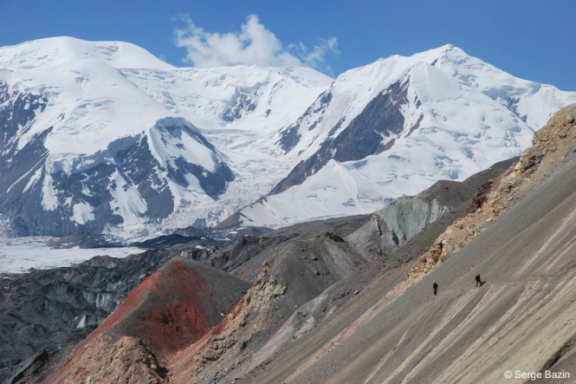Peak Lenin, 7,134 metres. THE seven-thousand-metre climb to get to grips with the high altitude. ‘A gigantic glacial trek up to 7,000 meters’, says Cédric Gras, in his book Alpinistes de Staline. Yes, but... After Aconcagua and its 6,962 meters, which is 38 meters short of entering the big league, and whose summit is not as easily conquered as you might think, you have to set off on the slopes of Peak Lenin to hope to break the symbolic seven thousand meter barrier. In fact, these two peaks share an almost perfect symmetry on the globe: Aconcagua 32° South - 70° West, Lenin 39° North - 72° East. One is exposed to the terrible katabatic winds from Antarctica, the other to Siberian hurricanes. In other words, the ‘glacier trek’ can sometimes turn into a tragedy. To be taken seriously. This summer, Expeditions Unlimited is taking you on a beautiful ascent to the land of vodka and caviar.
All our climbs over 7000 meters.
A name that reflects the vicissitudes of history
Kaufman Peak in 1871, Lenin Peak in 1928. These surnames tell the story of history.
Russian history first, under the reign of the Tsars. In 1871, the Russian explorer and naturalist Alexei Fedchenko was the first to traverse the Trans-Alai range, on the edge of the Pamir, on the borders of the Empire. No doubt impressed by the height of the south face, he named the summit after Konstantin Kaufman, who was Governor General of Russian Turkestan at the time.
The German-Poles beat the Bolsheviks to the punch
Then came the Bolshevik revolution. Kaufman Peak, then considered the highest peak in the USSR, could not keep the name it had been given under the despised tyrants. It was given the name of Vladimir Illitch, the illustrious theoretician of the revolution. From now on, it will be called Peak Lenin. And it still has to be climbed. On 25 September 1928, it was done, along the eastern ridge. Peak Lenin became the highest mountain ever reached by man, dethroning the historic British record set in 1907 by Dr Longstaff at Trisul in India (7,120 m). Problem: the winners, invited by the Soviets, were German-Polish. Their comrades' honour was at stake.
Nikolai Krylenko, the mountain apparatchik
Make no mistake about it. This has nothing to do with petty-bourgeois individualistic mountaineering. Here, we climb under the eye of Moscow, or more precisely that of the People's Commissar for Justice, Nikolai Krylenko. In 1928, he followed in the footsteps of the Germans on the East Ridge, but due to lack of training, was unable to follow them to the summit. Did they really make it to the summit? There is no proof other than their words alone. Doubts linger. So in 1934, he went back to try his luck. But with the best, the illustrious Abalakov brothers.
The Abalakov brothers
Vitali (22) the eldest, and Yevgeny the youngest (21). The engineer and the tightrope walker. The austere technician and the flamboyant sculptor and talented watercolour painter.
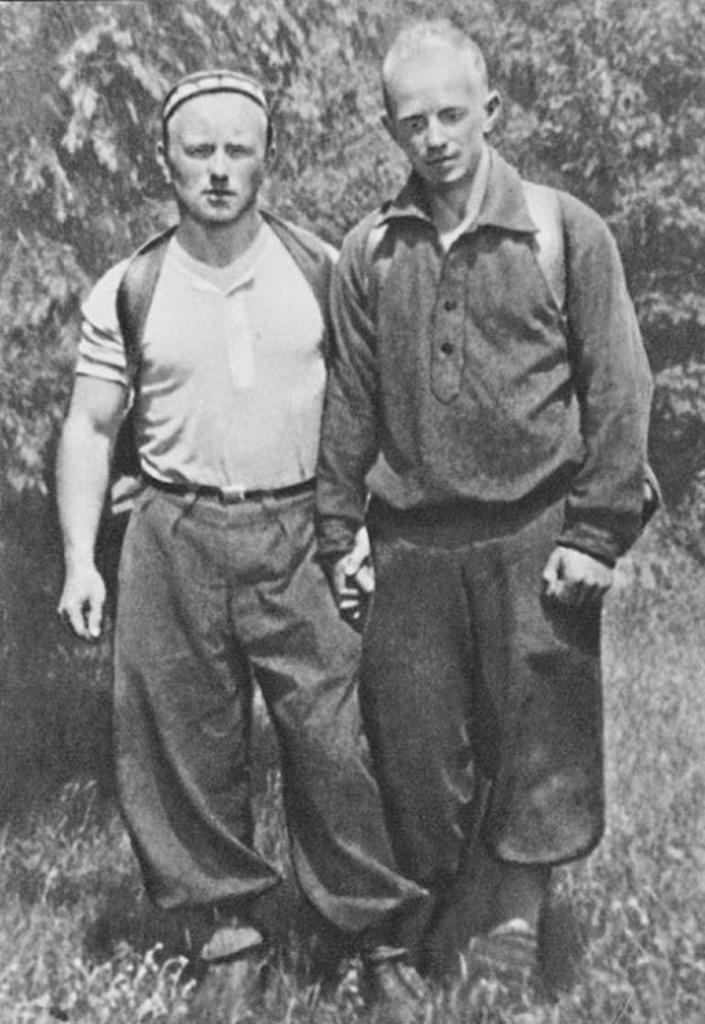
The two brothers, Evgueni and Vitali Abalakov
Cédric Gras brilliantly recounts the saga of these two peerless mountaineers, who are little known to the French public: ‘Yevgeny exudes health and insolent strength, right down to the frank look in his eyes. Vitali avoids the camera, his eyes lost as if in shyness in the meadow'. Originally from Krasnoyarsk in Siberia, they took their first steps in climbing on the Stolby walls.
.jpeg)
The Stolbys, the Siberian Fontainebleau ©The Baltimore Sun
As orphans, they ended up in Moscow at a very early age and achieved their first exploits on the mountains of the Caucasus, virtually unknown in the West. The Dikhtau (5,205 m), the Ushba (4,710 m) and the Bezengi Wall were breathtaking climbs for their time.
(1).jpeg)
The Bezengi Wall, a group of walls and peaks baptized by Russian climbers as ‘the little Himalayas’.
Five peaks exceed five thousand metres. Panoramio
Communist revenge
In 1933, the leader of Soviet mountaineering, Yevgeny was the first to reach the summit of... Stalin's Peak (7,495 m), then only recently recognised as the highest peak in the USSR. His ascent was dedicated to the ‘Little Father of the Peoples’, who reigned supreme at the time.
Ever since his aborted attempt in 1928, Krylenko had been dreaming of taking his revenge on Peak Lenin. Cédric Gras: ‘In 1934, he decided on an exclusively military expedition by the Red Army of workers and peasants. Given their track record, the Abalakov brothers were the natural choice to place a bust of the illustrious comrade on the summit and erase the German victory. For Krylenko's glory, of course. Krylenko did not make it to the summit, however, as his physical condition soon forced him to return down the mountain. Yevgeny was ordered to turn back to accompany a sick officer. By placing Lenin's bust on the summit, Vitali won the victory and the honours.
Boulevard de l'altitude? Perhaps.
From 1950 onwards, Peak Lenin became a regular training objective for Russian mountaineers. The original route, mapped out in 1934 by Vitali Abalakov on the north face, was abandoned in favour of the one carried out in 1954 by another Soviet team via the Razdelnaya peak and the long north-west ridge.
In 1967, during an international gathering, two hundred climbers (most of them from Eastern Europe) reached the summit of Peak Lenin.
In 1968, no doubt believing that Peak Lenin was harmless, some soldier decided to carry out a major operation: parachuting inexperienced soldiers to the summit. Violent air currents scattered the swarm to the four corners of the mountain. It took the climbers days to recover them in terrible conditions. The result: four dead and many amputated by frostbite. Stalin would have loved this brilliant feat of arms.
Tragedies
The mountain may have the reputation of being the easiest seven miles, but it is nonetheless subject to sudden and violent storms. In 1974, seven Russian women mountaineers, led by the beautiful Elvira Shataeva, had a tragic experience of this. With the indomitable Vitali Abalakov in charge at base camp!
A highly talented professional mountaineer, Elvira Shataeva launched an innovative project. An expedition made up exclusively of Soviet women. To prove that women are the equal of men in this still very macho sport? The route: the ascent via the 1934 route, the descent via the 1954 route and the Razdelnaya ridge. It all looked very promising. In three days, the team reached the last camp. But at the summit, they were caught in a violent storm.
What followed was a long agony, their rescue tent blown away by the wind, with no material to dig a shelter. The eight climbers died, one after the other, as the hurricane prevented any rescue operation. The result: for fifteen years, any expedition made up exclusively of representatives of the ‘weaker sex’ would be banned in Russia. The mountains must and will remain a man's business.
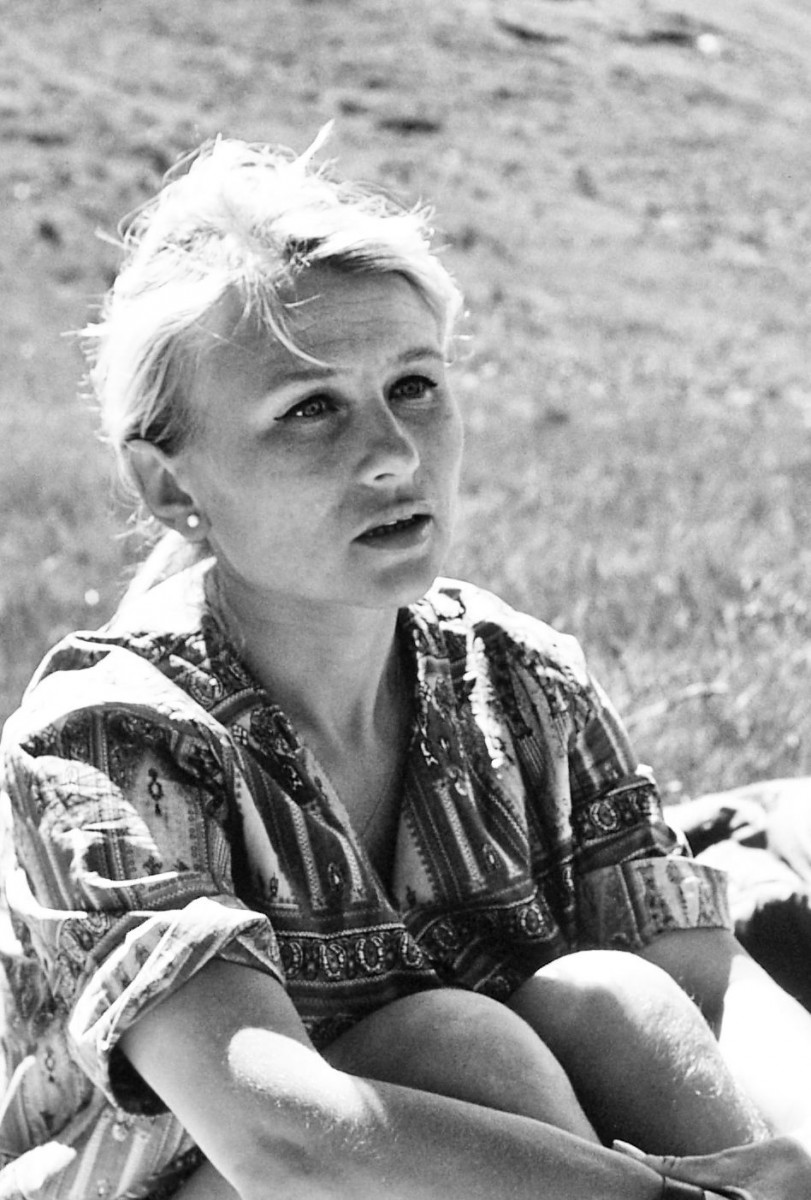 Elvira Shataeva, spearhead of Soviet women's mountaineering
Elvira Shataeva, spearhead of Soviet women's mountaineering
13 July 1990: the earth shook that night. Cédric Gras again: ‘An avalanche with a front of one and a half kilometres swept away forty-three slumbering people. It was the deadliest accident in the history of mountaineering.
Since then, the base camp has been moved downwards, in anticipation of another earthquake, which is always a possibility.
The current ascent route
It follows the now classic 1954 route.
The base camp is at Atchik Tash (3,750 m). The ascent to Camp I (4,200m) begins via the Col des Voyageurs (4,200m). Camp II at 5,200 metres. Camp III at 6,000 metres, on the pass that separates the Razdelnaya from the eastern ridge of Peak Lenin.
The comfort and organisation of the base camp date back to the Soviet era, only better: spacious tents, pantagruelic breakfasts, unlimited vodka...

Les deux itinéraires principaux qui permettent d’accomplir la traversée du pic Lénine.
À gauche, la voie de 1934, à droite l’itinéraire de 1954.
Fancy winning the Snow Leopard prize?
The USSR is no more. But mountaineers the world over are familiar with Peak Lenin in Kyrgyzstan. As for the new Russian authorities, they have invented a prize for those who succeed in climbing the five 7,000-metre peaks of the former USSR: Peak Lenin (7,134 m), Peak Ismail Samani (7,495 m), formerly Peak Stalin, formerly Peak of Communism, Peak Pobedy (7,439 m), Peak Korjenevskoï (7,105 m) and Khan Tengri (7,010 m). Join the Snow Leopard challenge.
Find out more about our ascent of Peak Lenin, guided by Serge Bazin, several-time summit climber.
And watch an animation of the ascent of Pic Lenin below:
Text and animation by Didier Mille.
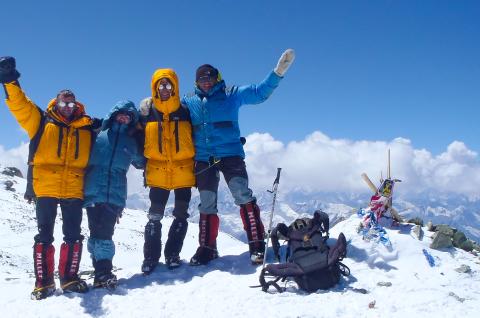
Climb Lenin Peak at 7154 meters in Kyrgyzstan
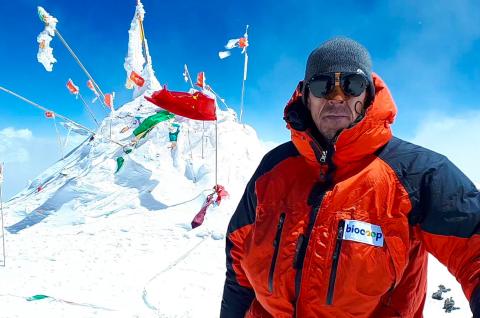
Climb Muztagh Ata at 7546 meters in China
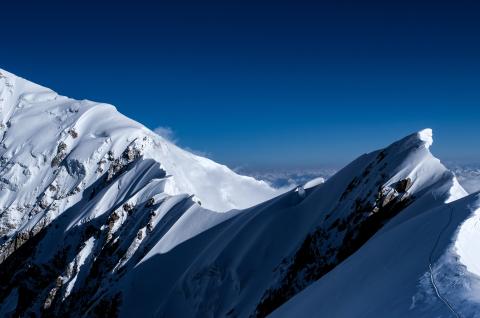

 Expeditions Unlimited blog
Expeditions Unlimited blog